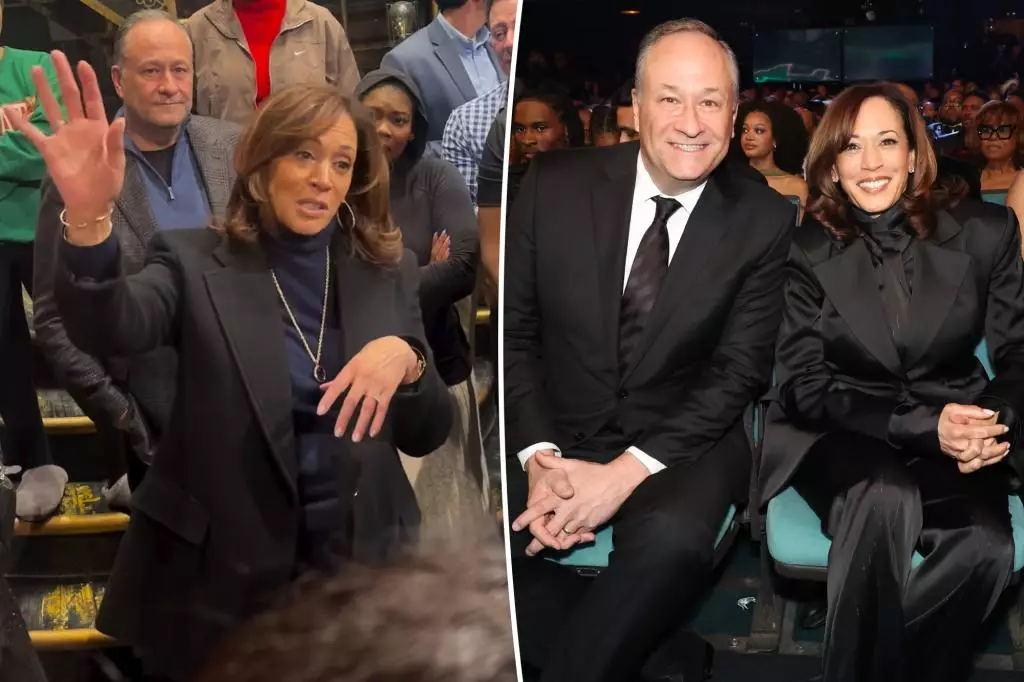In today’s politically charged environment, navigating the expectations of leadership can be an intricate game. Vice President Kamala Harris finds herself at the center of a political debate that extends beyond conventional complaint; it embodies a broader dissatisfaction among Democratic insiders following the party’s recent electoral defeats. The sentiment echoes like a chorus among critics who have taken to depicting Harris as a figure conspicuously absent from the rigorous demands of public engagement. The metaphor of “Where’s Waldo” has been aptly employed to describe her perceived absence during a critical time for the Democratic Party.
This critique is not simply about Harris’ visibility but instead reflects deeper concerns regarding her approach to leadership. Whether attending Broadway shows or aligning herself with Hollywood representation, her detractors argue that her leisure activities indicate a troubling disengagement from the pressing issues facing the nation. The frustration voiced by insiders revolves around an acute sense that Harris is not stepping up amidst a climate that necessitates bold leadership and decisive action.
The Weight of Expectations
Expectations for Harris are steep, especially given the substantial investment made by donors and party leaders during her campaign. The financial and emotional stakes were high, and many inside the political sphere are bewildered by her apparent retreat from the limelight. The suggestion that a vice presidential figure might prioritize personal enjoyment at such a pivotal moment only intensifies the scrutiny directed toward her. Her approach may be perceived as overly cautious, painting her as the most “risk-averse person” in a landscape that demands innovative thinking and proactive strategies.
Some analysts have gone so far as to assert that her reluctance to engage with new media platforms has hindered her overall effectiveness. This response to the changing media landscape – a critical tool in any political arsenal – raises the question: is she missing opportunities to connect with a broader audience and reclaim influence? Critics contend that avoiding challenging interviews and public discourse may have contributed to her unforeseen weaknesses during the election cycle.
A Contradictory Narrative
Yet, not all narratives surrounding Harris paint her in a negative light. There are voices that argue she remains connecting with key demographics quietly while raising funds for the Democratic National Committee and engaging with influential leaders across various states. This dichotomy reveals the complexity of her role; on one hand, her public visibility may lack the vibrancy demanded by the public, but on the other, her behind-the-scenes efforts appear dedicated and strategic.
Further complicating this dynamic is the influential presence of figures such as California Governor Gavin Newsom, whose bold initiatives and outspoken demeanor serve to contrast starkly with Harris’ more reserved behavior. While Newsom attracts the limelight with his active public engagements, Harris’ measured approach may not resonate as effectively in an electorate hungry for impactful narratives and vibrant leadership.
The Future of Democratic Leadership
As Democrats recalibrate their strategy in the aftermath of a staggering electoral defeat, the question lingers: Can Kamala Harris evolve into the leadership role that many insiders see her as capable of fulfilling? A genuine connection with constituents and daring public presence could transform her reception within the party. With the landscape of American politics becoming increasingly unpredictable, harnessing her strategic insight may be the key to redefining her narrative. Ultimately, only time will tell whether she can emerge from the shadows and solidify her place as a pivotal player in the evolving story of the Democratic Party.

Leave a Reply